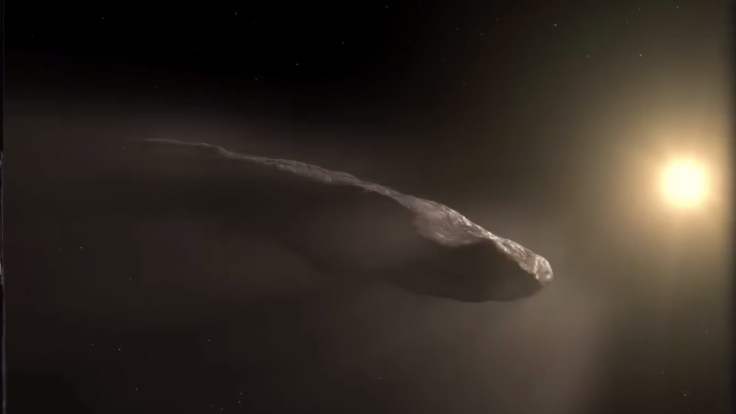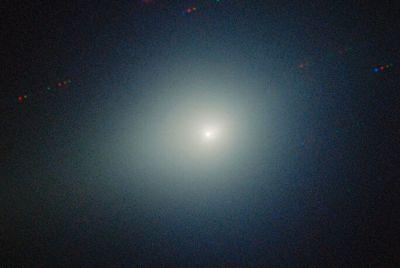12-Billion-Year Journey: Astronomers Trace Interstellar Comet 3I/ATLAS Across Time
Researchers say the newly discovered comet 3I/ATLAS, possibly older than the Sun, offers rare insights into the Milky Way's earliest chemical history and the birth of planetary systems.

Astronomers say interstellar comet 3I/ATLAS may predate the Sun by billions of years, offering a rare glimpse into the early Milky Way.
Estimated to be more than 12 billion years old, the object is likely the oldest comet ever recorded, according to a study led by Dr Matthew Hopkins of the University of Oxford.
Researchers believe it originated in the galaxy's thick disk, a region rich in ancient, metal-poor stars that orbit above and below the spiral arms.
Dr Matthew Hopkins found that 3I/ATLAS likely originated in the Milky Way's 'thick disk', a region populated by old, metal-poor stars orbiting above and below the galaxy's main spiral arms.
According to Hopkins' team, 'with about 68 per cent confidence, 3I/ATLAS is between 7.6 and 14 billion years old,' meaning it existed long before the Sun formed about 4.6 billion years ago.
The research, released through EurekAlert!, described the comet as a 'relic from the early Milky Way,' formed when the galaxy was still taking shape.
Hopkins said the finding provides 'a statistical basis to say that 3I/ATLAS is very likely to be the oldest comet we have ever seen'. He added that its discovery 'opens a window into conditions that existed billions of years before our Solar System formed.'
Scientists believe its composition, notably a high CO₂-to-H₂O ratio and traces of nickel and cyanogen (CN), offers a chemical snapshot of the Milky Way's earliest epoch, when heavy elements were scarce and molecular chemistry was emerging.
Discovered by ATLAS Survey
The interstellar visitor was first detected on 1 July 2025 by the Asteroid Terrestrial-impact Last Alert System (ATLAS) telescope in Chile.
Its unbound, hyperbolic trajectory immediately indicated it was not native to the Solar System, marking only the third confirmed interstellar object ever recorded, after ʻOumuamua in 2017 and 2I/Borisov in 2019.
The comet is travelling at about 58 kilometres per second relative to the Sun. It is expected to reach its closest approach, or perihelion, on 29 October at roughly 1.36 astronomical units — a little farther than Earth's orbit, according to Universe Today.
After its brief passage, 3I/ATLAS will continue on its hyperbolic path and leave the Solar System permanently, according to the European Southern Observatory (ESO).
In a statement published by ESO, astronomers explained that the comet's speed and orbital pattern 'confirm that it is unbound from the Sun's gravity' and will eventually 'head back into interstellar space' once it swings past perihelion.
Observers have already reported a growing tail and a bright coma surrounding the nucleus as it nears the Sun, according to AP News.
Chemical Fingerprints of the Early Galaxy
Spectroscopic data from the James Webb Space Telescope (JWST) revealed that 3I/ATLAS has an unusually high carbon dioxide (CO₂) to water ratio — one of the highest ever measured in a comet —according to a report on arXiv.
The composition suggests it formed in an environment with very low metallicity, consistent with the ancient stars of the thick disk.
Other studies detected traces of nickel and cyanogen (CN) in the comet's outgassing, elements not commonly found in typical Solar System comets, the report added.
Researchers say these materials could provide direct evidence of the chemical conditions that existed during the early stages of the Milky Way's formation.
An analysis by IFL Science described 3I/ATLAS as a 'time capsule from the dawn of the galaxy,' preserving molecules forged long before the Sun and its planets came into existence.
Scientists Race to Observe a Fleeting Visitor
With 3I/ATLAS now approaching perihelion, astronomers across the world are racing to gather as much data as possible before it disappears into interstellar space.
The European Space Agency and NASA have both committed telescope time to study the comet's gas emissions, dust composition, and trajectory through early 2026.
A report by Live Science noted that new telescope images show the comet's coma glowing in iridescent hues, earning it the nickname 'the cosmic rainbow.'
Researchers believe 3I/ATLAS's brief visit could help them refine models of how planetary systems form in different galactic environments.
As Hopkins told Phys.org, 'This is a unique opportunity to study material that predates the Solar System itself. Every data point we collect adds to our understanding of where we came from.'
Conclusion
As 3I/ATLAS nears its solar-system closest approach, astronomers are converging on one clear verdict: this is a naturally formed interstellar comet, not an engineered spacecraft.
Its hyperbolic orbit confirms it arrived from outside our solar system. Detailed imagery shows jetting of gas and dust consistent with cometary activity.
Spectroscopy reveals an unusually high ratio of carbon dioxide to water ice, a rare composition but compatible with formation in a low-metallicity, early galactic environment.
Polarimetric depicts surface and dust-tail properties unlike those of typical Solar System comets, signalling that this is a specimen from a very different origin. Nevertheless, significant questions remain. The exact stellar system or region from which it was ejected is still unknown.
The mechanisms by which it escaped and survived for potentially billions of years remain poorly defined. Some speculative proposals (including artificial-origin hypotheses) have appeared, but these remain fringe and lack robust evidence.
In short, 3I/ATLAS offers a unique, fleeting opportunity to study ancient, extrasolar material in our own backyard, a cosmic messenger from the early Milky Way.
The global scientific community is racing to capture every moment of its passage before it exits our solar neighbourhood for good.
© Copyright IBTimes 2025. All rights reserved.



















